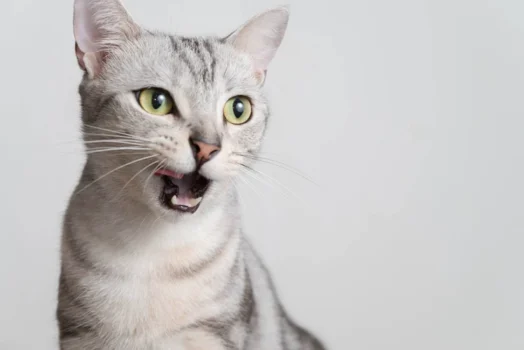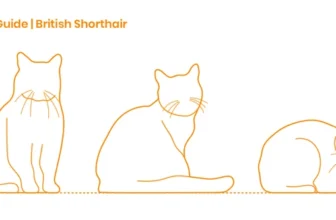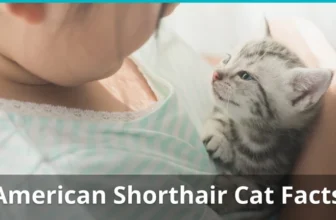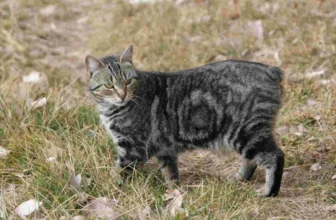As much as we adore our furry little feline friends, we can’t deny that they, too, are susceptible to genetic health issues, just like any other living being. In the case of American Shorthair cats, it is important to understand these genetic health concerns in order to provide the best possible care for them. From polycystic kidney disease to hypertrophic cardiomyopathy, there are several conditions that can impact the health and wellbeing of this beloved breed. In this article, we will explore the various genetic health issues that American Shorthair cats may experience, including their symptoms, diagnosis, treatment, and prevention.
Polycystic Kidney Disease
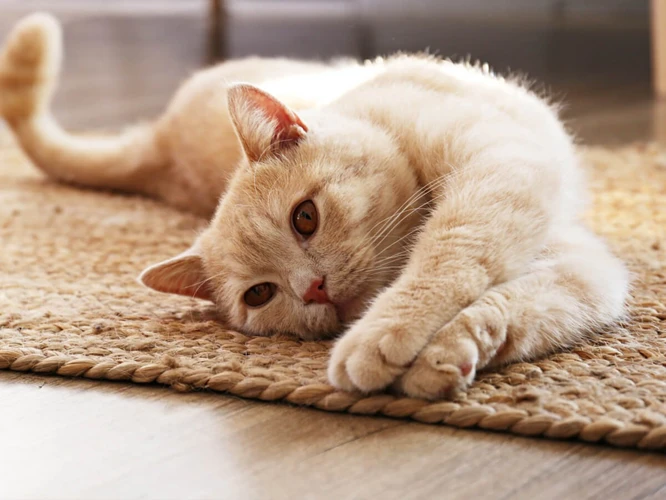
Polycystic Kidney Disease, or PKD, is a genetic health issue that affects American Shorthair cats. This condition causes the development of cysts in the kidneys, which can lead to kidney failure over time. It is important for cat owners to be aware of PKD and the potential impact on their pet’s health. In this section, we will take a closer look at PKD, including the symptoms, diagnosis, treatment, and prevention of the disease. For more information on other common health issues in American Shorthair cats, visit the health issues section of our website.
What is Polycystic Kidney Disease?
Polycystic Kidney Disease is a genetic disorder that affects the kidneys of American Shorthair Cats. This disease leads to the formation of fluid-filled cysts in the kidneys, which interfere with their normal function. These cysts can grow to be large and multiply over time, gradually replacing functional kidney tissue.
The following table provides more information on Polycystic Kidney Disease:
| Term | Description |
|---|---|
| Genetic factors | PKD is an inherited condition, which means it’s passed down from one generation to the next through dominant genes. |
| Age of onset | Symptoms of PKD can start showing up in affected cats as early as 1-2 years of age. |
| Symptoms | Some common signs of PKD in cats include frequent urination and excessive thirst, weight loss, vomiting, diarrhea, poor appetite and lethargy. |
| Diagnosis | PKD is diagnosed through physical examination, blood test, urine analysis and imaging tests like ultrasounds or X-rays. |
| Treatment | Unfortunately, there’s no cure for PKD in cats currently. Treatment is focused on managing the symptoms and slowing down the progression of the disease through medication, specialized diets and hydration therapy. Surgery may also be recommended in some cases. |
| Prevention | The best way to prevent PKD in American Shorthair Cats is through genetic testing before breeding and avoiding breeding two cats that both carry the gene for PKD. |
It’s important for cat owners to be aware of the genetic health issues in American Shorthair Cats, such as PKD, so they can recognize the symptoms early on and seek prompt veterinary attention. Regular vet checkups are essential for maintaining good health and catching any potential health problems before they become serious. If you suspect your cat has PKD or any other health issues, schedule a visit to your veterinarian as soon as possible. You can learn more about how to keep your American Shorthair Cat healthy and happy by visiting other articles on our website, such as /shorthair-cat-urinary-tract-issues/ and /vet-checkups-american-shorthair-cats/.
Symptoms of Polycystic Kidney Disease
Polycystic kidney disease (PKD) is a hereditary condition that can affect American Shorthair cats. Early detection of PKD is important, as the symptoms may not be noticeable until the disease is in an advanced stage. Some of the common symptoms of PKD include:
- Increased thirst and urination – Cats with PKD may consume larger quantities of water than usual and have to urinate more frequently. This may lead to accidents outside of the litter box.
- Weight loss – As PKD progresses, the cat may begin to lose weight despite an increased appetite.
- Poor coat quality – Cats with PKD may begin to develop a dull, unkempt coat due to dehydration and poor nutrition.
- Painful abdomen – As cysts grow in the kidneys, they can cause pain in the abdomen when touched or pressed.
- Vomiting – As the disease progresses, cats with PKD may vomit more frequently. This can be due to a variety of factors, including dehydration and digestive issues.
If you notice any of these symptoms in your American Shorthair cat, it is important to speak with a veterinarian as soon as possible. Early detection can help improve the cat’s quality of life and increase the effectiveness of treatment options.
It is also important to note that not all cats with PKD will exhibit symptoms, making regular check-ups with a veterinarian even more important. Testing for PKD can be done using ultrasound imaging, which allows the vet to examine the kidneys for abnormalities.
For more information on keeping your American Shorthair cat healthy, please visit /healthy-american-shorthair-cat/.
Diagnosing and Treating Polycystic Kidney Disease
Polycystic Kidney Disease can be diagnosed through several methods, including a physical exam, blood tests, urinalysis, and imaging tests. During a physical exam, a veterinarian may feel for enlarged kidneys or palpable cysts. Blood tests may reveal elevated levels of creatinine and BUN, which can indicate kidney dysfunction. Urinalysis can also help to identify issues with kidney function.
Imaging tests such as ultrasounds and x-rays can provide a clearer picture of the kidneys and confirm the presence of cysts. This is particularly important in identifying Polycystic Kidney Disease in its early stages, when it may not present with any symptoms.
Unfortunately, there is no cure for Polycystic Kidney Disease. However, treatment options are available to help manage the symptoms and slow the progression of the disease. This can include medications to lower blood pressure, improve kidney function, and control pain.
Dietary changes may also help to minimize symptoms and support kidney function. Feeding your American Shorthair cat a specialized diet that is low in protein and sodium can help reduce the workload on the kidneys and prevent further damage.
In severe cases, surgery or dialysis may be necessary to remove cysts and improve kidney function. However, these options are generally reserved for cats with advanced stages of the disease.
Regular check-ups with a veterinarian and monitoring of kidney function through blood and urine tests can help manage the progression of Polycystic Kidney Disease and prevent further complications.
It is important to note that Polycystic Kidney Disease is a genetic condition, which means it cannot be prevented. However, selective breeding practices can help reduce the prevalence of the disease in future generations of American Shorthair cats. If you are planning to adopt or purchase an American Shorthair, it is important to inquire about the cat’s genetic health history.
By taking steps to manage the symptoms of Polycystic Kidney Disease, American Shorthair cats can continue to lead happy and healthy lives. If you are unsure how to navigate your cat’s special dietary needs and health issues, consult with a veterinarian to create a comprehensive care plan.
Special dietary needs are essential to maintaining your American Shorthair cat’s health when dealing with Polycystic Kidney Disease, especially when it comes to preventing other related health issues such as diabetes.
Preventing Polycystic Kidney Disease
Preventing Polycystic Kidney Disease is a crucial step in making sure that your American Shorthair cat lives a long and healthy life. Currently, there is no known cure for PKD, so prevention is the best option. Here are some steps you can take to reduce the likelihood of your cat developing PKD:
- Breed with PKD-free cats: If you plan to breed your American Shorthair, be sure to only breed with cats that have been tested and found to be free of the PKD gene. This is the most effective way to prevent PKD from being passed on to future generations.
- Regular check-ups: Regular visits to the vet can help identify any potential health issues before they become serious. Screening tests that include kidney function tests and ultrasounds can be done to check for PKD. This can ensure earlier detection and treatment if necessary.
- Healthy diet: A healthy, balanced diet is crucial for the overall health of your American Shorthair, including their kidney health. Feeding your cat high-quality protein sources and plenty of fresh, clean water can reduce the risk of kidney problems.
- Reduce stress: Stressful situations can trigger or worsen kidney problems, so providing a stress-free environment for your cat is important. This can be accomplished by providing adequate space, toys, and regular exercise.
By following these preventative measures, you can significantly reduce the likelihood of your American Shorthair developing PKD. Remember, early detection is key, so regular check-ups with your vet are crucial.
Hypertrophic Cardiomyopathy

Hypertrophic Cardiomyopathy (HCM) is a genetic health issue that affects many American Shorthair cats. This condition occurs when there is thickening of the heart muscle, which can cause complications in the heart’s ability to pump blood effectively. HCM can be a perplexing and frightening diagnosis for cat owners, but with proper understanding and care, it is manageable. In this section, we will explore the causes, symptoms, treatment, and prevention techniques for HCM in American Shorthair cats.
What is Hypertrophic Cardiomyopathy?
Hypertrophic Cardiomyopathy (HCM) is a serious genetic health issue that affects American Shorthair cats. It is a condition that affects the heart muscles, leading to thickening of the muscle walls. This thickening can cause the heart to pump less effectively, leading to serious health complications. It is important to note that HCM is not a curable condition, but it can be managed to improve the quality of life for affected cats.
Causes of Hypertrophic Cardiomyopathy:
The exact cause of HCM is not known, but it is believed to be a genetic disease that is inherited from a cat’s parents. The disease is caused by a genetic mutation that leads to thickening of the heart muscles. This disease affects both male and female American Shorthair cats, and can even affect kittens.
Symptoms of Hypertrophic Cardiomyopathy:
The symptoms of HCM can vary from cat to cat and depend on the severity of the disease. Some of the common symptoms of HCM include:
- Difficulty breathing
- Coughing
- Loss of appetite
- Weight loss
- Lethargy
- Weakness
- Abnormal heart sounds during a veterinarian exam
Diagnosing and Treating Hypertrophic Cardiomyopathy:
HCM can be diagnosed through a physical examination and diagnostic tests, including x-rays, echocardiograms, and electrocardiograms. These tests can help to identify if there is any thickening of the heart muscles or any other abnormalities. Unfortunately, there is no cure for HCM, but it can be managed with medication and regular checkups. Treatment options may include medications to reduce the workload on the heart, improve heart function, and manage symptoms.
Preventing Hypertrophic Cardiomyopathy:
Since HCM is believed to be a genetic disease, there is no surefire prevention method. However, it is advised to monitor the health of breeding cats closely, to try and reduce the occurrence of HCM in American Shorthair cats. Breeders can also test for the genetic mutation that causes HCM, before breeding cats.
Hypertrophic Cardiomyopathy is a serious genetic health issue that can be managed with medication and regular checkups. If you notice any of the symptoms of HCM in your American Shorthair cat, it is important to consult with your veterinarian right away. While there is no cure for this condition, early detection and proper management can help to improve the quality of life for affected cats.
Symptoms of Hypertrophic Cardiomyopathy
Hypertrophic Cardiomyopathy, or HCM, is a genetic heart condition that can cause thickening of the heart muscle, making it difficult for the heart to pump blood effectively. While some cats may not show any symptoms at all, there are several signs to look out for that may indicate your American Shorthair has developed HCM.
Here are some common symptoms that may indicate HCM:
- Labored breathing: If your cat seems to be breathing more heavily than usual, or is panting, this may be a symptom of HCM.
- Coughing: A persistent cough could be a sign of fluid build-up in the lungs, which can be linked to HCM.
- Lethargy: If you notice your cat seems to be sleeping more than usual, or is less active and playful, it could be a sign of HCM.
- Heart murmur: A heart murmur is an unusual sound that can be heard when a vet listens to your cat’s heart with a stethoscope. This may be a symptom of HCM.
- Passing out or collapsing: In some cases, an American Shorthair with HCM may pass out or collapse, which can be a life-threatening symptom.
It’s important to remember that not all cats with HCM will show symptoms, and some symptoms may be mild enough that you don’t notice them. If you suspect your American Shorthair may have HCM, it’s important to speak with your vet who can perform an examination and provide a diagnosis.
While there is no cure for HCM, there are treatments that can help manage the symptoms, such as medication to help regulate the heartbeat or reduce fluid build-up. Additionally, cats with HCM should be monitored regularly by a vet to help catch any changes in the condition early.
Note: It’s important to keep up with regular vet checkups and care for your American Shorthair to help prevent the development or worsening of genetic health issues. For more information on preventing common health issues in American Shorthair cats, check out our articles on preventing dental issues, managing arthritis, dealing with allergies, and diabetes care.
Diagnosing and Treating Hypertrophic Cardiomyopathy
Diagnosing Hypertrophic Cardiomyopathy
Diagnosing hypertrophic cardiomyopathy in American Shorthair cats involves various diagnostic tests performed by a veterinarian. These tests could include:
- Blood tests: Blood tests help the veterinarian evaluate the overall health of the cat and check for any underlying medical conditions.
- Physical examination: During the physical examination, the veterinarian will check the cat’s heart rate, listen to its heartbeat for any abnormalities, and observe other physical symptoms of the disease.
- Echocardiogram: An echocardiogram is an ultrasound of the cat’s heart. It is a non-invasive diagnostic tool that provides detailed images of the heart which can help detect any changes in the heart structure.
- Electrocardiogram (ECG): An ECG records the electrical activity of the cat’s heart and helps diagnose abnormal heart rhythms and other heart abnormalities.
- Chest X-ray: A chest X-ray is used to evaluate the size of the cat’s heart, the presence of fluid in the lungs, and other lung-related abnormalities.
Treating Hypertrophic Cardiomyopathy
There is no known cure for hypertrophic cardiomyopathy in American Shorthair cats. However, treatment can help manage the symptoms and improve their quality of life. The treatment options for hypertrophic cardiomyopathy may include:
- Medications: Medications are used to manage the symptoms of hypertrophic cardiomyopathy and prevent complications.
- Restricting physical activity: Limiting exercise and physical activity can help manage the symptoms of hypertrophic cardiomyopathy and prevent sudden death.
- Special diet: A low-sodium or low-fat diet may be recommended depending on the cat’s overall health and the severity of the disease.
- Surgery: In severe cases, surgery may be required to remove the excess tissue in the heart.
- Regular check-ups: It is essential for cats with hypertrophic cardiomyopathy to have regular check-ups with a veterinarian to monitor the progression of the disease and adjust the treatment plan accordingly.
Keep in mind that each cat’s condition is unique, and the treatment plan will depend on the severity of the disease and the overall health of the cat. It is crucial to consult a veterinarian to ensure that proper treatment is provided to your American Shorthair cat.
Preventing Hypertrophic Cardiomyopathy
Genetic health issues can be concerning for any cat owner, especially when it comes to issues like hypertrophic cardiomyopathy. While there is no guaranteed way to prevent this condition from occurring in American Shorthair cats, there are steps that can be taken to lower their risk of developing it.
One of the most important steps in preventing hypertrophic cardiomyopathy is to ensure that your American Shorthair cat has a healthy and balanced diet. Feeding them a diet that is high in protein and low in carbohydrates can help maintain a healthy weight, which is important in preventing obesity. Obesity can put extra stress on the heart, increasing the risk of heart-related issues like hypertrophic cardiomyopathy.
Regular exercise is also crucial in maintaining an American Shorthair cat’s overall health. Encouraging your cat to engage in play and exercise can help control their weight and keep their heart healthy.
Another important aspect of preventing hypertrophic cardiomyopathy is ensuring that your American Shorthair cat receives regular veterinary checkups. During these appointments, your veterinarian can monitor their heart health and detect any abnormalities before they become more serious.
Additionally, it is important to be aware of your cat’s family history when it comes to hypertrophic cardiomyopathy. If you know that other cats in your cat’s lineage have had this condition, it may be worth discussing with your veterinarian whether genetic testing or more frequent monitoring is necessary.
By taking these preventative measures and prioritizing your American Shorthair cat’s heart health, you can help lower their risk of developing hypertrophic cardiomyopathy. However, it’s important to remember that genetics do play a role in this condition, and there is no way to completely eliminate the risk of it occurring. Consulting with your veterinarian and following a preventative care plan is the best way to ensure the long-term health of your American Shorthair cat.
| Preventative Measures for Hypertrophic Cardiomyopathy in American Shorthair Cats |
| 1. Provide a healthy and balanced diet that is high in protein and low in carbohydrates. |
| 2. Encourage regular exercise and play to help control weight and maintain a healthy heart. |
| 3. Schedule regular veterinary checkups to monitor heart health and detect abnormalities early on. |
| 4. Be aware of your cat’s family history and consider genetic testing or more frequent monitoring if necessary. |
Other Genetic Health Issues
It’s not just Polycystic Kidney Disease and Hypertrophic Cardiomyopathy that American Shorthair cats can face. There are several other genetic health issues that may affect your furry feline friend. These conditions can appear gradually or suddenly and can be identified by various symptoms. Being aware of these health issues can help you take necessary precautions and ensure your cat’s well-being. Let’s take a look at some other genetic health issues that American Shorthair cats might develop.
Patellar Luxation
Patellar luxation is a genetic health issue that can occur in American Shorthair cats. It is a condition in which the kneecap or patella dislocates from its normal position. This can result in pain, lameness, and an inability to bear weight on the affected leg.
Causes: Patellar luxation can be caused by a congenital abnormality in the cat’s knee joint, such as a shallow groove in the femur or a misaligned quadriceps muscle. It can also be caused by trauma to the knee joint or as a result of degenerative joint disease.
Symptoms: Some common symptoms of patellar luxation include limping, hopping, or skipping on one hind leg, holding the affected leg up, or reluctance to put weight on the affected leg. In some cases, the kneecap can be manually manipulated out of place and then back into place, causing the cat to yelp or cry out in pain.
Diagnosis: Diagnosis of patellar luxation usually involves a physical examination by a veterinarian. X-rays may also be taken to evaluate the cat’s knee joint and determine the severity of the luxation.
Treatment: Treatment for patellar luxation can vary depending on the severity of the condition. In mild cases, the cat may not require any treatment at all, while in more severe cases, surgery may be necessary to realign the kneecap and stabilize the knee joint.
Prevention: Patellar luxation is a genetic condition, so there is no surefire way to prevent it from occurring. However, choosing a breeder who screens their cats for patellar luxation and other genetic health issues can help reduce the risk of your American Shorthair cat developing this condition.
To summarize, patella luxation is a genetic health issue that can cause discomfort and pain for American Shorthair cats. Regular check-ups with a veterinarian and early diagnosis of the condition could help the affected cat lead a pain-free life.
Progressive Retinal Atrophy
Progressive Retinal Atrophy, also known as PRA, is a hereditary condition that affects the eyes of American Shorthair cats. This condition results in progressive degeneration of the retina, which can lead to vision loss and blindness. PRA is caused by mutations in certain genes that affect the function and development of retinal cells.
Causes of Progressive Retinal Atrophy
PRA is an inherited condition that is caused by mutations in one or more genes that affect the retinal cells. There are several forms of PRA that affect different breeds of cats, including American Shorthairs. In some cases, the condition can be caused by mutations in a single gene, while in others, it may be caused by multiple gene mutations.
Symptoms of Progressive Retinal Atrophy
The symptoms of PRA can vary depending on the severity of the condition and the age of the cat. In its early stages, PRA may cause no symptoms, and the cat may appear to see normally. As the condition progresses, however, the cat may begin to experience difficulty seeing in dim light, and may eventually lose its vision completely.
Diagnosing and Treating Progressive Retinal Atrophy
If you suspect that your American Shorthair cat may have PRA, it is important to schedule an appointment with your veterinarian as soon as possible. Your veterinarian will perform a thorough physical examination of your cat’s eyes and may also conduct a variety of tests to assess the extent of the condition.
There is currently no cure for PRA, and treatment options are limited. However, there are certain medications and supplements that may help to slow down the progression of the disease and preserve your cat’s vision for as long as possible. Your veterinarian will be able to recommend appropriate treatments based on the severity of your cat’s condition.
Preventing Progressive Retinal Atrophy
The best way to prevent PRA in American Shorthair cats is to ensure that you select a kitten from a breeder who tests for the condition and screens their cats for genetic mutations that may cause PRA. By choosing a kitten from a reputable breeder and ensuring that it has been properly screened for genetic mutations, you can significantly reduce the risk of your cat developing PRA.
Conclusion
Progressive Retinal Atrophy is a hereditary condition that can have a significant impact on the vision and quality of life of American Shorthair cats. While there is no cure for PRA, early detection and appropriate treatment can help to slow down the progression of the disease and preserve your cat’s vision for as long as possible. By working closely with your veterinarian and selecting a kitten from a reputable breeder, you can take steps to ensure that your American Shorthair cat remains healthy and happy for years to come.
| Causes of PRA | Symptoms of PRA | Treatment for PRA |
|---|---|---|
| Hereditary condition caused by mutations in one or more genes that affect the retinal cells. | Difficulty seeing in dim light and eventual complete loss of vision. | No cure, but medications and supplements may help slow down the progression of the disease. |
Feline Lower Urinary Tract Disease
Feline Lower Urinary Tract Disease (FLUTD) is a collection of different conditions that affect a cat’s urinary system. This can include bladder stones, urinary tract infections, urethral obstructions, and more. FLUTD can be a frustrating experience for both cats and their owners, but understanding the condition is an important first step in preventing and treating it.
Symptoms of FLUTD
Cats with FLUTD can display a variety of symptoms, with one of the most common being urinating outside of the litter box. This is often due to the pain or discomfort the cat experiences while urinating. Other common symptoms of FLUTD can include:
– Straining to urinate
– Blood in the urine
– Frequent attempts to urinate with only small amounts produced
– Licking of the genital area
If you notice any of these symptoms in your cat, it’s important to take them to the vet for a proper diagnosis and treatment plan.
Diagnosing and Treating FLUTD
When you take your cat to the vet for FLUTD, they will likely perform a physical exam and run some tests to determine the underlying cause of the condition. This may include blood work, urine tests, and imaging scans.
Treatment for FLUTD can vary depending on the specific condition causing the symptoms. For example, if bladder stones are the cause, the cat may need surgery to have them removed. If a urinary tract infection is present, antibiotics may be prescribed.
Preventing FLUTD
Preventing FLUTD in your cat is not always possible, but there are some steps you can take to reduce the risk. Making sure your cat has access to plenty of fresh water can help prevent urinary tract infections, while keeping their litter box clean and easily accessible can reduce the likelihood of them urinating outside of the box.
Additionally, feeding your cat a high-quality diet can also help prevent FLUTD. Talk to your vet about the best type of food for your cat’s specific nutritional needs.
FLUTD is a complex condition that can be caused by a variety of factors. If you notice any symptoms in your cat, it’s important to take them to the vet for a proper diagnosis and treatment plan. By taking steps to prevent FLUTD and monitoring your cat’s health, you can help keep them happy and healthy for years to come.
Conclusion
After exploring the various genetic health issues that American Shorthair Cats can experience, it’s clear that responsible breeding and regular veterinary check-ups are essential for maintaining their overall health and well-being.
Polycystic Kidney Disease (PKD) is a serious condition that can lead to kidney failure if left untreated. It’s important for breeders to screen for PKD in their breeding cats and for owners to be aware of the signs and symptoms, such as increased thirst and urination, vomiting, and weight loss. Early diagnosis and management can help improve the prognosis and quality of life for affected cats.
Hypertrophic Cardiomyopathy (HCM) is another significant genetic concern, which can lead to heart failure and sudden death in cats. Owners must watch out for symptoms such as coughing, labored breathing, and lethargy, while breeders can help prevent HCM by screening their cats and breeding only from healthy individuals.
Other genetic health issues like Patellar Luxation, Progressive Retinal Atrophy, and Feline Lower Urinary Tract Disease can also impact American Shorthair Cats, causing discomfort, pain, and even blindness in some cases.
In conclusion, being aware of these genetic health issues can help owners take preventative measures and seek early treatment, improving the overall health and well-being of their American Shorthair Cats. By working with responsible breeders and seeking regular veterinary care, owners can help ensure a healthier future for this beloved breed.
Frequently Asked Questions
What is the lifespan of an American Shorthair cat?
The average lifespan of an American Shorthair cat is between 12-16 years.
Are American Shorthair cats prone to obesity?
Yes, American Shorthair cats are prone to obesity and should be fed a balanced diet and given regular exercise.
Can Polycystic Kidney Disease be prevented?
While Polycystic Kidney Disease cannot be prevented, it can be managed through early detection and proper treatment.
Are all American Shorthair cats prone to Hypertrophic Cardiomyopathy?
No, not all American Shorthair cats are prone to Hypertrophic Cardiomyopathy. However, the breed does have a higher incidence rate compared to other breeds.
What is the most common symptom of Hypertrophic Cardiomyopathy?
The most common symptom of Hypertrophic Cardiomyopathy in cats is difficulty breathing or labored breathing.
Can Patellar Luxation be cured?
Patellar Luxation can be treated through surgery, but it cannot be cured.
What is the cause of Progressive Retinal Atrophy?
Progressive Retinal Atrophy is a genetic condition that is passed down from parent cats to their offspring.
Can Feline Lower Urinary Tract Disease be prevented?
Feline Lower Urinary Tract Disease can be prevented through proper hydration, a balanced diet, and regular veterinary checkups.
Are all American Shorthair cats prone to Polycystic Kidney Disease?
No, not all American Shorthair cats are prone to Polycystic Kidney Disease. It is a genetic condition that can be inherited from one or both parent cats.
How often should I take my American Shorthair cat to the vet for checkups?
It is recommended to take your American Shorthair cat to the vet for checkups at least once a year. Senior cats (over 7 years old) may need more frequent visits.

